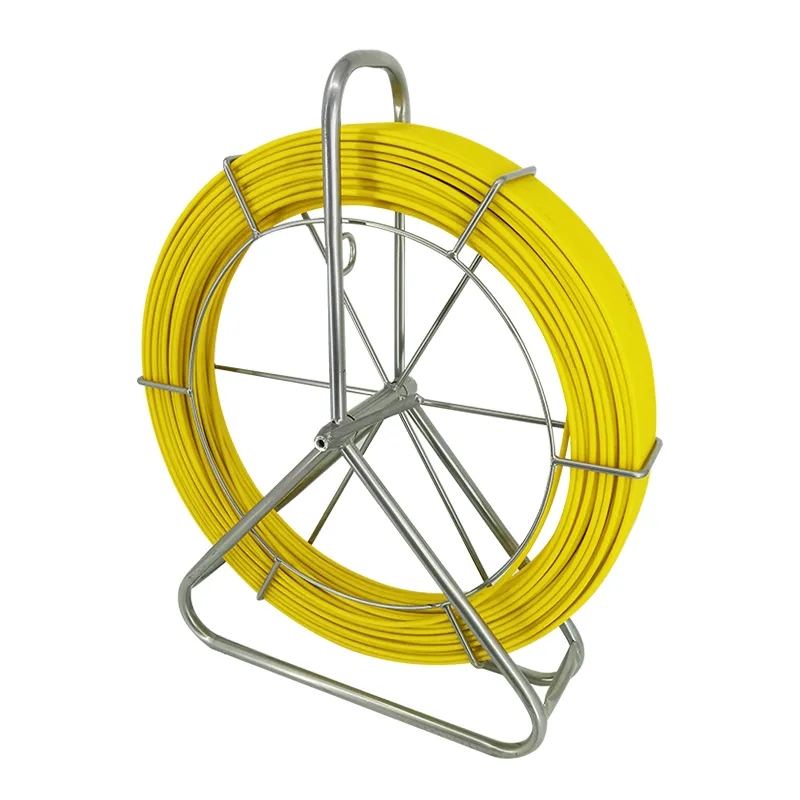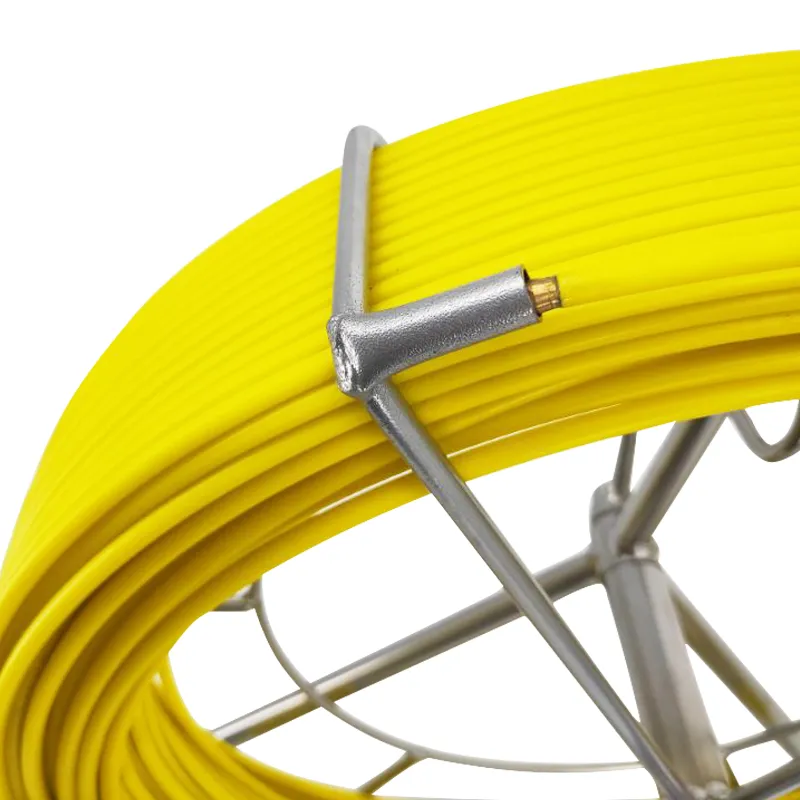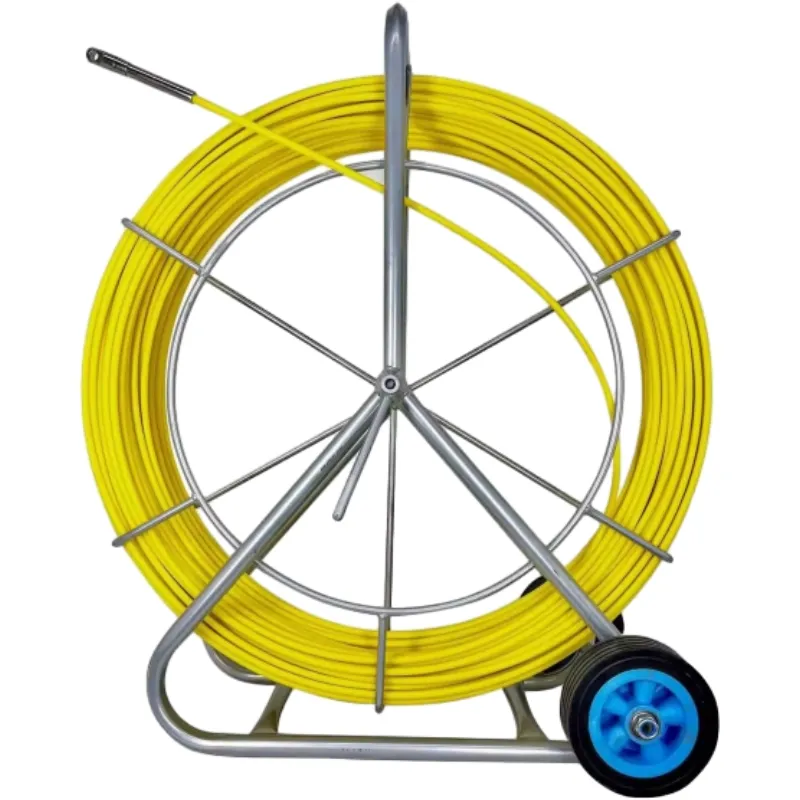


Oct . 18, 2025 13:45 Back to list
Duct Rodder for Sale – Durable Fiberglass, Fast Shipping
Field Notes: Choosing a Fiberglass Cable Duct Rodder That Actually Survives the Job
If you’re scanning the market for a practical duct rodder for sale, here’s the short of it: not all fiberglass cores and frames are created equal. I’ve walked more than a few job sites where a bargain rod kinked on the first 90° sweep. The Fiberglass Cable Duct Rodder from China has been popping up with utilities and fiber contractors lately—largely because it balances tensile strength with a sensible frame that doesn’t wobble under load.

What’s trending (and why it matters)
Demand for non-conductive rodders in congested ducts is rising—5G densification, fiber-to-the-home, and sewer rehab all push the same button: reliable push distance without electrical risk. Actually, crews ask for stiffer rods (for long runs) but still want a decent minimum bend radius. The trick is epoxy‑bonded E‑glass with a tough HDPE jacket. Many customers say a smooth jacket reduces snagging on old PE duct seams—small detail, big impact.

Core specs at a glance
| Parameter | Typical value (≈, real‑world use may vary) |
|---|---|
| Rod diameter | 6–14 mm options |
| Rod core | E‑glass FRP with epoxy resin matrix |
| Jacket | HDPE, low-friction, UV‑stabilized |
| Tensile strength | ≈ 1200–1500 MPa (rod core) |
| Dielectric properties | Non‑conductive; tested per IEC 61386 concepts |
| Min bend radius | ≈ 20× diameter |
| Frame | Welded steel, powder‑coated, rust resistant |
| Accessories | Pulling eye, guide head, brake, meter markings (optional) |
| Service life | ≈ 8–10 years with routine care |
| Origin | China |

Where it’s used (and why crews like it)
- Pulling leads for telecom, fiber, and coax in old PE/PVC ducts.
- Sewer and storm line inspections—the non-conductive core is reassuring.
- Cleaning/sweeping ducts before blowing microcable.
- Industrial plants needing corrosion resistance.
- Municipal projects with mixed legacy conduits; time saving is noticeable.
I guess the practical advantage is simple: you push farther with fewer resets. The welded frame resists torsion, so the drum doesn’t flex when someone gets ambitious on a long run.

Build process, testing, and standards
Materials: E‑glass fibers, epoxy resin, HDPE jacket; frame is high‑grade steel, welded and powder‑coated.
Methods: Pultrusion for the FRP core, continuous jacketing, precision straightening, then drum winding.
Testing: Flexural per ASTM D790, pull tests to rated load, dielectric checks aligned with IEC 61386 concepts, salt‑spray on frame, jacket abrasion cycles.
Industries: Telecom, power distribution (non‑live), municipal water/sewer, rail, and data center campus OSP.
| Vendor | Core/Jacket | Frame | Certs | Lead time | Notes |
|---|---|---|---|---|---|
| Bilopowtel Fiberglass Cable Duct Rodder | E‑glass FRP / HDPE | Welded steel, powder coat | ISO 9001; RoHS ≈ | ≈ 2–4 weeks | Solid push stiffness, good value |
| Vendor A (global brand) | FRP / PU jacket | Aluminum frame | ISO 9001; REACH ≈ | Stock on common sizes | Premium price; smooth jacket |
| Vendor B (value line) | FRP / HDPE | Painted steel | Factory QA only | ≈ 3–6 weeks | Lower cost; variable tolerances |

Customization and a quick field story
Custom diameters, color striping, metric/imperial meter marks, and stainless hardware are common requests. One metro fiber crew shared a simple result: swapping to a stiffer 10 mm rod cut a 420 m pull’s prep time by ~25% because the guide head didn’t stall at couplers. Not dramatic, but over dozens of pulls that’s real savings. To be honest, that’s why a dependable duct rodder for sale gets paid back quietly—less fuss, more meters per day.

Certifications, data, and support
Factory is typically ISO 9001 audited; materials can be supplied with RoHS/REACH declarations on request. Test snapshots I’ve seen: flexural modulus verification (ASTM D790), dielectric checks, and frame load tests—no deformation at common site loads. After‑sales is straightforward: replaceable heads, pulling eyes, and brake parts. If you’re eyeing a duct rodder for sale for mixed telecom/sewer work, ask for a jacket abrasion report and bend‑radius proof—worth it.

References
- ASTM D790 – Standard Test Methods for Flexural Properties of Unreinforced and Reinforced Plastics. https://www.astm.org/d0790
- IEC 61386 – Conduit systems for cable management. https://webstore.iec.ch/publication/2558
- ISO 9001:2015 – Quality management systems — Requirements. https://www.iso.org/standard/62085.html
- EU RoHS Directive 2011/65/EU (and amendments). https://environment.ec.europa.eu/topics/waste-and-recycling/rohs-directive_en
Latest news
Hydraulic Crimping Tool – Precision & Heavy-Duty Speed
NewsNov.05,2025
Cable Pulling Swivel | High-Strength, Anti-Twist, Stainless
NewsNov.04,2025
Cable Pulling Tools – Pro-Grade, Safe, Fast Install
NewsNov.03,2025
Hydraulic Crimping Tool – Fast, Precise, Quick-Change Dies
NewsNov.02,2025
Hydraulic Crimping Tool for Sale | Fast, Precise, Heavy-Duty
NewsNov.01,2025
Duct Rodder for Sale – Non-Conductive, Durable Fiberglass
NewsOct.31,2025









